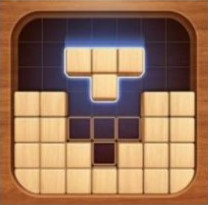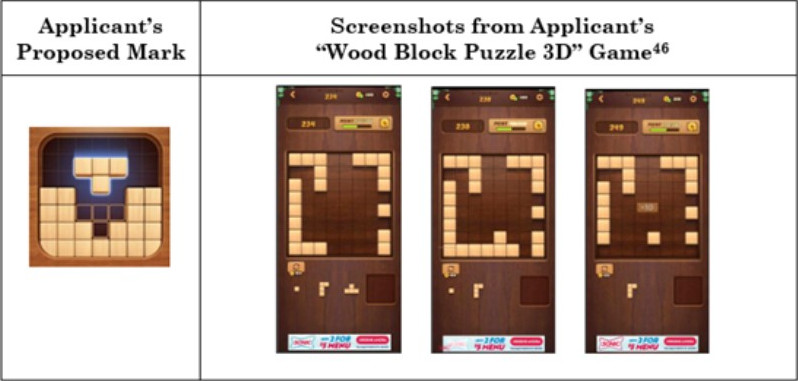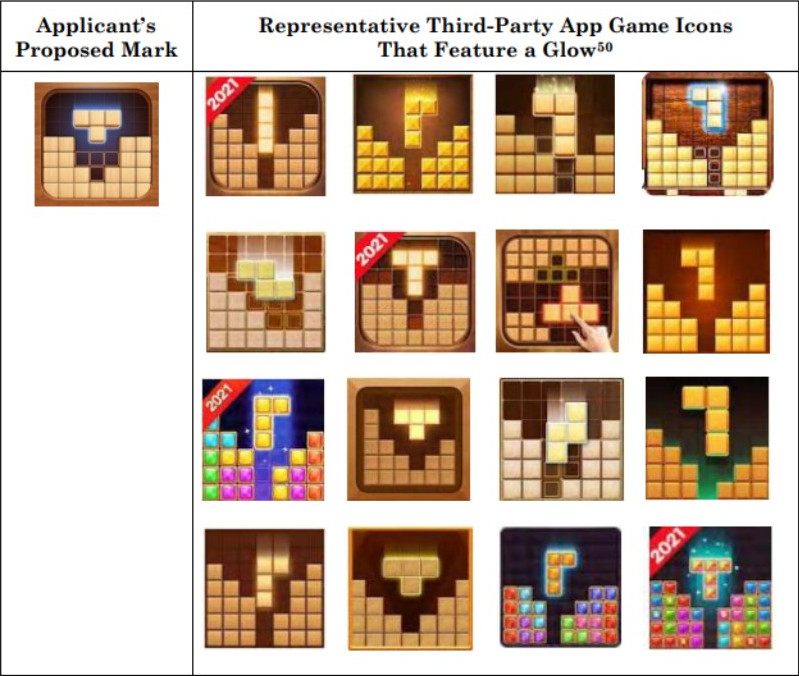1300 19th Street, N.W.
Suite 420 Washington, DC 20036
TTAB Finds Applicant’s Block Puzzle Mobile App Icon Merely Descriptive and Unregistrable
In a precedential decision, the Trademark Trial and Appeal Board (the “Board”) refused registration of the image of a mobile app icon on the grounds that it is merely descriptive of the applicant’s “Wood Block Puzzle 3D” mobile app game.

A mark is “merely descriptive if it immediately conveys information concerning a feature, quality, or characteristic of the goods or services for which registration is sought.” Id. at 17 (citing Real Foods Pty Ltd. v. Frito-Lay N. Am., Inc., 906 F.3d 965, 975 (Fed. Cir. 2018)). Trademark law has long recognized that images or pictorial representations may be “just as descriptive as a word if it immediately conveys information as to the content, subject matter, feature, or characteristic of the goods or services.” Id. at 18.
In this case, the Board explained that an image does not need to be completely accurate, realistic, or true-to-life to be merely descriptive, but rather, the key inquiry is whether the image “conveys an immediate idea of a feature of the goods and lacks any additional fanciful, arbitrary, or suggestive matter.” Id. at 19 (citing Swatch Grp. Mgmt. Servs. AG, 110 USPQ2d 1751, 1755-57 (TTAB 2014)). When analyzing the Applicant’s block puzzle image, the Board found that the image merely describes Applicant’s goods because it immediately conveys the idea of a block puzzle game, which is a feature or characteristic of applicant’s goods. (The identification of goods in the application was unrestricted and covered, among other things, “downloadable game software” and “downloadable computer game software for personal computers.”).
The Board rejected the applicant’s arguments that the mark was not merely descriptive because it contained additional fanciful elements that are not featured in the applicant’s game. In support of its position, the Board compared the mark with screenshots from the applicant’s game and found that both the block puzzle image and the game feature pale block game pieces against a dark background with faint lines forming a grid in the background. Additionally, both the mark and game have a brown border surrounding the gameplay area and the symmetrical configuration shown in the block puzzle image is also a configuration in the applicant’s game. A feature in the game also allows certain blocks to be outlined to form the shape of the block in play, just as is shown in the applicant’s mobile app image.


The Board acknowledged that the blue background and glow emanating from the blocks in the mark do not appear in the game, and thus, the block puzzle image is not merely an illustration of applicant’s game. However, because numerous third-party apps show active game pieces in a glowing outline format to indicate movement, that feature is considered merely descriptive for block games to the relevant purchasing public, and thus, not sufficient to establish that the block puzzle mark is distinctive.

The Board concluded that applicant’s mobile app image had “no appreciable distinctiveness” in its design elements and that applicant either took elements directly from its game or used the same common elements as third parties in a crowded field of block puzzle app icons. Thus, the mobile app image and its “combination of components does not create a unitary mark with a non-descriptive meaning.” Id at. 29.
The case is Hangzhou Mengku Technology Co., Ltd. v. Shanghai Zhenglang Technology Co., Ltd., No. 91272143 (TTAB Dec. 30, 2024).
Written By
Lauren Jancuska
Thank you!
Thank you for getting in touch!
We appreciate you contacting us. One of our colleagues will get back in touch with you soon!
Your cookies settings
XThis website stores cookies on your computer. These cookies are used to collect information about how you interact with our website and allow us to remember you. We use this information in order to improve and customize your browsing experience and for analytics and metrics about our visitors both on this website and other media. To find out more about the cookies we use, see our Privacy Policy.
More infoI Agree

